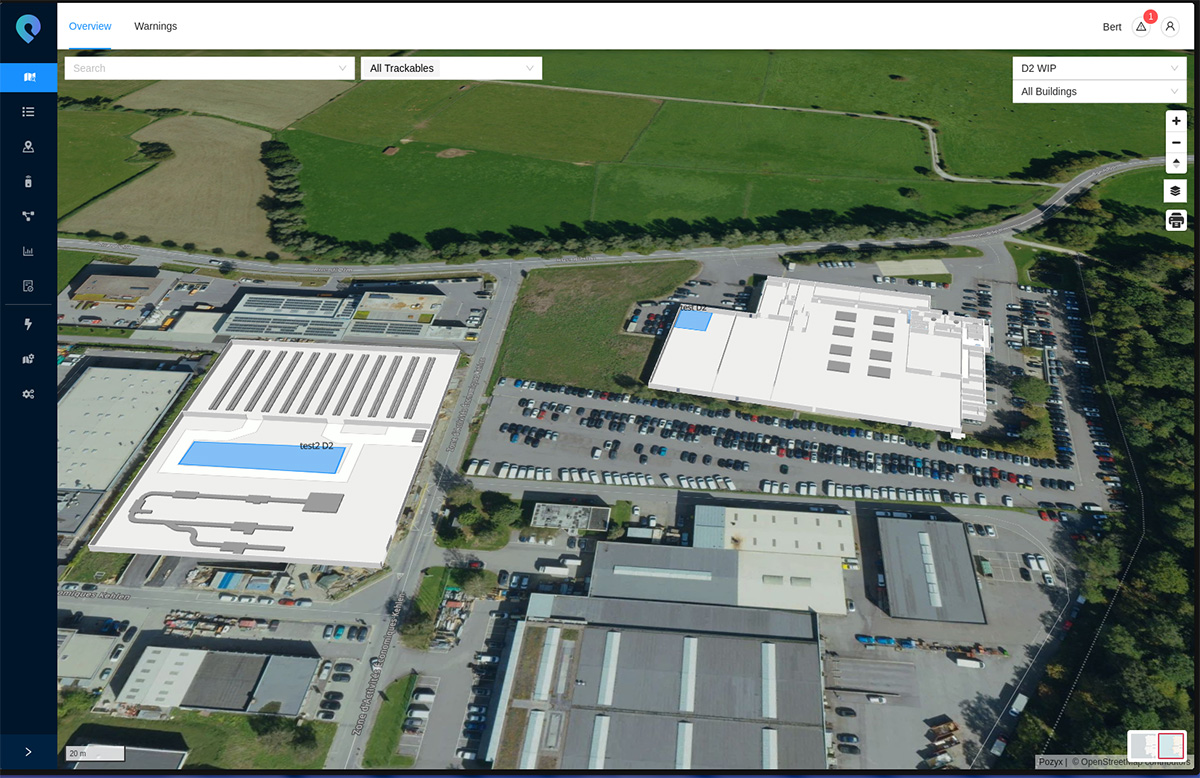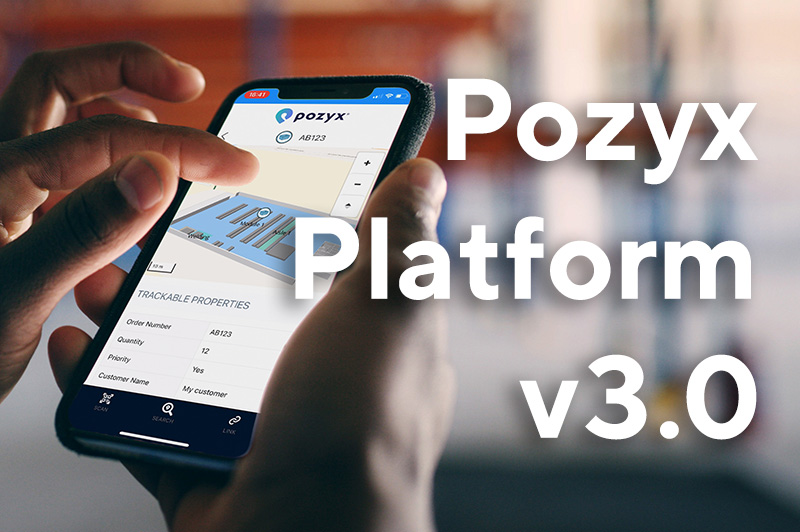The Next Generation of Returnable Package Tracking: Smarter, Leaner, and Ready for Scale
Rethinking Returnables in 2025
In our previous article regarding the challenges surrounding returnable packaging in 2023, manufacturers and logistics providers were just beginning to recognize the scale of the problem: millions of pallets, totes, bins, and roll cages go missing or idle every year. Reusable transport packaging generally includes pallets, bins, and reusable plastic containers. What was once considered a small operational nuisance has since become a high-priority issue with clear cost and sustainability implications. As companies move away from single-use packaging, sustainability initiatives now focus on the principles of reduce, reuse, and recycle. Reuse of durable packaging materials helps minimize waste, while recycling ensures that materials at the end of their lifecycle are processed responsibly. Returnable packaging complements recycling efforts by supporting multiple cycles of use before materials are ultimately recycled, reinforcing environmental responsibility.
Fast forward to 2025, and tracking returnable packaging has evolved from being a “nice-to-have” to a mission-critical function in any supply chain optimization strategy. Rising material costs, stricter ESG goals, and new innovations in IoT tracking technologies have changed the game. Real-time tracking of returnable packaging can be enabled with UWB, GPS, and BLE tags. Today, returnables are more than just containers—they’re smart, traceable assets that move products efficiently between manufacturing sites, warehouses, and retail locations.
Types of Returnable Packaging: The Building Blocks of Modern Supply Chains
Returnable packaging forms the backbone of efficient, sustainable supply chains. These solutions are engineered for repeated use, offering businesses a way to cut costs, reduce waste, and streamline supply chain operations. The most prevalent types include pallets, crates, bins, tanks, and intermediate bulk containers (IBCs), each designed to withstand the rigors of multiple trips and diverse handling environments. For example, in the automotive industry, reusable plastic containers (RPCs) are essential for transporting parts and components safely and efficiently between suppliers and assembly plants. By integrating returnable packaging into their logistics, companies not only lower their packaging costs but also significantly reduce their carbon emissions and environmental footprint. This shift away from single-use packaging supports both operational efficiency and corporate sustainability goals, making returnable packaging a smart investment for businesses across industries.

What’s New in Returnable Packaging Tracking?
1. Smart Tracking with Real-Time Location Systems (RTLS)
A major evolution in returnable packaging tracking is the merging of indoor and outdoor location capabilities. Today’s systems combine RTLS infrastructure with mobile GPS-enabled BLE gateways and intelligent tracking tags that support multiple technologies such as UWB, BLE, Wi-Fi, and GPS. This hybrid approach ensures continuous visibility across warehouses, transport routes, and distribution sites. While passive RFID and barcode scans once formed the foundation of asset identification and still play a role for certain checkpoints, the newest generation of hybrid RTLS solutions, such as the Pozyx Platform, delivers automated, real-time visibility without manual intervention. Devices can leverage cellular options like LTE-M or NB-IoT, and parameters such as reporting frequency, sensor sensitivity, and power management can be fine-tuned for each use case. The result is a fully connected tracking ecosystem that bridges all environments and eliminates blind spots.
2. Automation Triggers and Exception Handling
In 2025, tracking platforms aren’t just telling you where a tote is—they’re telling you why it matters. Advanced systems trigger alerts when items dwell too long at a station, fail to arrive on schedule, or breach geofenced zones. Alerts can be programmed to notify stakeholders of specific asset events or status changes, including real-time notifications for delayed shipments or missed deliveries. This helps ensure supply chain efficiency by allowing immediate action to prevent disruptions in the transportation and delivery of goods. This enables real-time decisions and exception workflows, reducing loss and cycle time.
3. Asset Pool Optimization
Modern solutions now include data-driven pooling intelligence that automatically identifies underutilized returnables, forecast shortages, and recommends redistribution. By tracking usage patterns of returnable packaging, tools, and equipment, organizations can better optimize resource allocation and improve operational efficiency. Leveraging tracking data can optimize the use of returnable packaging and minimize transportation costs. This is a leap beyond simply knowing location—it’s about optimizing the lifecycle and rotation rate of every asset in your fleet.
4. Regulatory & Sustainability Momentum
With ESG standards tightening globally, reusable packaging has become a cornerstone of circular supply chain models. Reusable packaging is manufactured of durable materials and is specifically designed for multiple trips and extended life. Real-time tracking provides the auditable, verifiable data needed to meet regulatory benchmarks and reduce carbon footprint by eliminating one-way packaging. Additionally, real-time tracking helps organizations achieve compliance with industry regulations and standards by ensuring accurate monitoring and reporting of packaging use and lifecycle.
Ontdek het Pozyx Platform
Het Pozyx platform brengt positioneringsgegevens samen om volledige zichtbaarheid te geven aan logistiek en productie.
Pozyx PlatformImplementation and Deployment: Turning Vision into Reality
Successfully adopting a returnable packaging system starts with a thorough evaluation of current supply chain operations to pinpoint opportunities for improvement. Companies must select packaging solutions that align with their specific needs, considering factors like durability, compatibility, and lifecycle costs. Asset management software is a game-changer in this process, providing real-time tracking and management of returnable assets such as shipping containers and pallets. By deploying tracking devices with extended battery life, businesses can monitor the location and condition of their assets throughout the supply chain, reducing reliance on manual processes and minimizing human error. This technology-driven approach not only optimizes asset utilization but also enhances productivity and streamlines logistics, ensuring that every container is accounted for and used to its full potential.
Collaboration and Partner Engagement: Building a Connected Ecosystem
The success of any returnable packaging initiative hinges on strong collaboration across the supply chain. Businesses must engage with suppliers, logistics partners, and customers to create a seamless, integrated system that maximizes the value of returnable packaging. Sharing data and best practices enables all parties to coordinate more effectively, reduce costs, and respond quickly to changing demands. For example, a company might work with a logistics provider to co-develop a tailored returnable packaging solution that addresses unique operational challenges, ensuring that packaging flows smoothly between partners. This collaborative mindset not only drives efficiency and cost savings but also enhances customer satisfaction and positions businesses to thrive in a competitive marketplace.
How Pozyx Leads in Reusable Packaging Visibility
The Pozyx Platform provides an end-to-end solution for real-time visibility of reusable packaging across complex industrial environments. It supports multiple positioning technologies that can work together depending on the use case, ensuring accurate tracking both indoors and outdoors.
Key capabilities include:
- Hybrid technology support for UWB, BLE, and GPS to locate assets across warehouses, yards, storage areas, and transport routes.
- Geofencing and movement triggers to monitor asset flow across zones
- Battery-efficient trackers tailored for long-life deployment
- Powerful dashboards for cycle analysis, heat maps, and choke point detection
- Integration with ERP, WMS, TMS, and pooling systems for seamless automation and route optimization of deliveries and asset movements
- Case study-proven ROI, with customers reporting significant reduction in shrinkage and faster rotation of assets
Data from tracked assets is transferred from the tracker to the cloud through the cellular network, gateways, or through RTLS infrastructure for further analysis and reporting.
Pozyx solutions are built for scale—whether you’re managing 500 or 50,000 assets across multiple locations. Contact us for more information.

Alerts and Notifications: Staying Ahead of Issues in Real Time
Real-time visibility is a cornerstone of modern returnable packaging systems, and timely alerts are key to proactive asset management. With advanced asset tracking devices and software, companies can receive instant notifications when a returnable asset enters or exits a designated location, is delayed, or requires maintenance. This level of real-time visibility empowers businesses to act swiftly—whether rerouting a misplaced container or scheduling repairs before issues escalate. For instance, if a shipping container is unexpectedly delayed in transit, automated alerts enable supply chain managers to investigate and resolve the issue before it disrupts operations. By leveraging these real-time components, companies can optimize their supply chain operations, minimize downtime, and ensure that assets are always where they need to be.
Security and Access Control: Safeguarding Your Returnable Assets
Protecting returnable assets from loss, theft, or unauthorized use is essential for maintaining supply chain efficiency and minimizing costs. Implementing robust security measures—such as access controls, real-time monitoring systems, and advanced tracking devices—ensures that only authorized personnel can handle valuable shipping containers and other returnable assets. For example, GPS-enabled tracking devices combined with geofencing technology allow companies to monitor the precise location of their containers and receive immediate alerts if an asset moves outside a designated area. This proactive approach to security not only deters theft and misuse but also enables rapid response to potential breaches, safeguarding assets and supporting the smooth flow of goods throughout the supply chain. By prioritizing security and access control, businesses can enhance operational efficiency and protect their investments in returnable packaging.
Results That Matter
Our clients have seen measurable ROI from tracking reusable packaging:
- Up to 80% reduction in lost assets
- Faster return cycles through geofenced automation
- Reduced labor hours spent on manual counts and reconciliation
- Better planning and pooling decisions via live data insights
In high-volume industries like automotive, food processing, retail distribution, and CPG, even minor inefficiencies in returnable packaging flow can result in major losses. That’s why more companies are turning to full-visibility tracking with Pozyx.
The Road Ahead
The future of reusable packaging is intelligent, connected, and circular. We anticipate the continued merging of returnable tracking systems with broader digital twin models, predictive pooling algorithms, and perhaps even AI-driven maintenance planning (e.g., identifying damaged containers before they fail). Historical data analysis helps make informed decisions regarding asset management and utilization.
As more companies commit to zero-waste goals and supply chain digitization, returnable packaging will remain a high-impact opportunity—and Pozyx will be there, delivering the visibility and data to turn lost assets into strategic value.
Looking for a Reusable Packaging solution?










